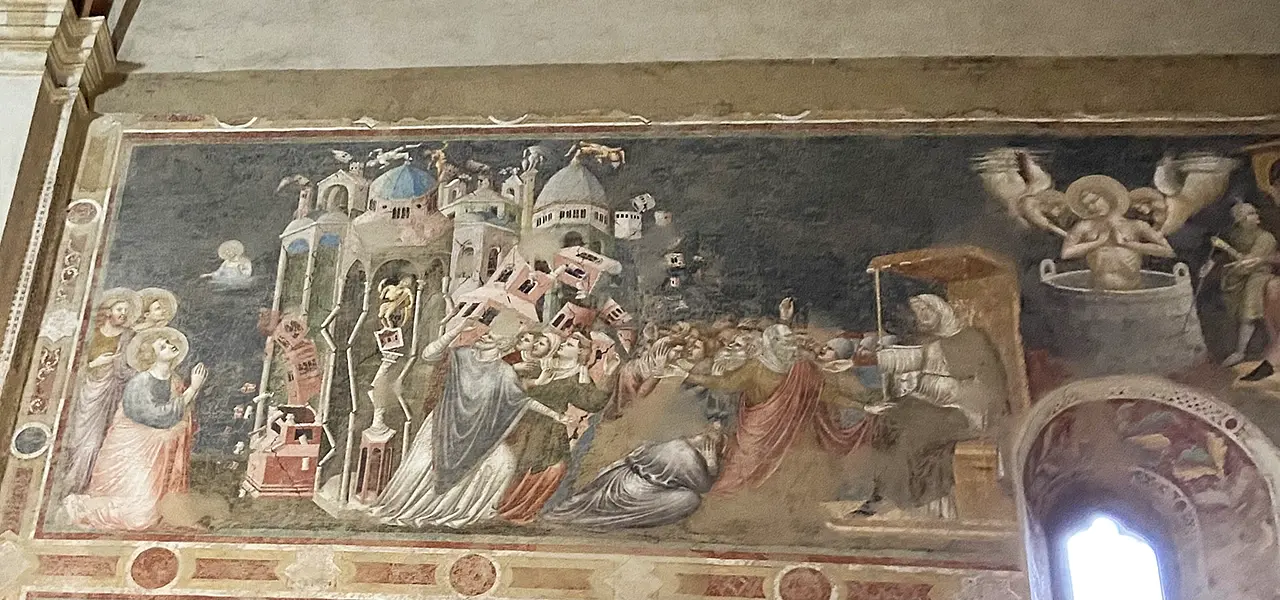SHARRYLAND

















The frescoes in the church of Sant'Agostino in Rimini
Rimini's oldest church and a splendid cycle of frescoes attributed to the Rimini school


Where

The Rimini school of painting: a bit of history
A good school of painters was already there in Rimini before 1300, it was a school of Byzantine traditions of course, but its establishment was due to Giotto's contamination. Giotto arrived in Rimini about those years, brought by the Malatesta family to work on the church of San Francesco, what later became the Malatesta Temple.
Why it is special: Giotto's legacy
All that remains of Giotto's works is a beautiful crucifix, but his influence on Rimini painters was immense and he gave birth to what was the great School of Giovanni da Rimini. Solid bodies, real characters with real feelings, architecture that already intuits perspective, attention to detail, this can be found in the frescoes of the church of St. Augustine. These are two chapels, one behind the high altar, the other at the base of the bell tower; the latter, much ruined, tells the stories of Mary, the other well restored tells the stories of St. John the Evangelist and St. Augustine.
The Chapel of St. John the Evangelist
The story of St. John is not in chronological order and one struggles to follow it. It begins with the saint plunged into a boiling cauldron, according to the torture ordered for him by Emperor Domitian. Saved by angels he is exiled to the island of Patmos, where he is depicted intent on writing the apocalypse surrounded by monstrous beasts and angels blowing trumpets. After Domitian's death, John is allowed to return from exile and travels to Ephesus where he finds the funeral of his disciple Drusianus in progress ; he has not arrived in time to greet her, so he resurrects her.
Not to be missed: the episode in the pagan temple.
Challenged by the priest of the temple of Artemis to pray to idols, St. John causes the temple to collapse in one of the most beautiful and realistic scenes in the entire fresco cycle, with columns breaking and statues of idols flying hither and thither. It becomes clear here that the people of Rimini really did see an earthquake, in 1308. In the center behind the altar, stands the Majesty of Christ, below a beautiful Madonna and Child still in Byzantine taste, and below again the Noli me tangere.
Curiosity: the portrait of Dante
A curiosity not to be missed in the church is the alleged portrait of Dante Alighieri, the man in the green robe among the participants in Drusiana's funeral. He still has traces of the laurel wreath painted for him by Vincenzo Belli, the discoverer of the church's frescoes, which remained buried until the 1916 earthquake. Funds for restoration were lacking, and the call of the Supreme Poet could move the right pawns, also in view of the celebrations for the sixth centenary of his death. With the complicity of some distinguished art historian, thanks to an imaginary portrait of Dante, the funds arrived and the frescoes were restored.
Enter the Map of Italy's Undiscovered Wonders and find treasures where you least expect it... Inspire, Recommend, Share...
Contacts

